We present a grid of 3D NLTE – 1D LTE abundance corrections for a number of spectral lines for a sequence of F, G, and K dwarf and giant stellar model atmospheres. Following standard convention here, (N)LTE stands for (non-)Local Thermodynamic Equilibrium. The corrections can be used to improve the accuracy of the element abundance obtained by standard 1D LTE techniques by applying the tabulated corrections, thus accounting for the combined effect of the 3D atmospheric structure and deviations of the atomic level populations from local thermodynamic equilibrium. We also present a corresponding grid of 1D NLTE — 1D LTE abundance corrections.
To reduce the computational costs, we have adopted the so-called 1.5D approximation for computing the level populations only, i.e., we treat each column of the 3D models atmosphere as an independent plane-parallel 1D model when solving the statistical equilibrium. Using the 1.5D departure coefficients, the final line formation is computed on the full 3D structure, including the hydrodynamical velocity field. In this sense, we refer to 3D NLTE results in the following. Our assumption that the 1.5D departure coefficients are a very good approximation of the full 3D departure coefficients is based on previous results for other chemical elements. The validity of the 1.5D approximation for the case of barium is presently being investigated in a separate study.
The tabulated corrections were created using two codes: the 1.5D statistical equilibrium code NLTE15D, and the 3D spectral synthesis code Linfor3D. NLTE15D is an MPI wrapper that allows one to solve the 1D statistical equilibrium problem on every vertical column of a 3D model. It uses the 1D statistical equilibrium code Multi 2.3 (Carlsson, 1986). NLTE15D works for both 3D and 1D model atmospheres. The 1.5D departure coefficient data computed with NTLE15D is used as input into Linfor3D to perform a full 3D NLTE spectrum synthesis. Matching the resulting line strengths with 1D LTE line profiles obtained from the associated 1D reference model atmosphere sharing the same stellar parameters yields the desired 3D NLTE — 1D LTE abundance corrections.
Special care has been taken regarding the choice of the 1D reference model atmospheres and a consistent treatment of the microturbulence. In the following, we shall briefly discuss these important aspects for preparing and using our abundance correction grids.
Abundance corrections available for: Barium II
References:
Carlsson, M. 1986, Uppsala Astronomical Observatory Reports, 33
